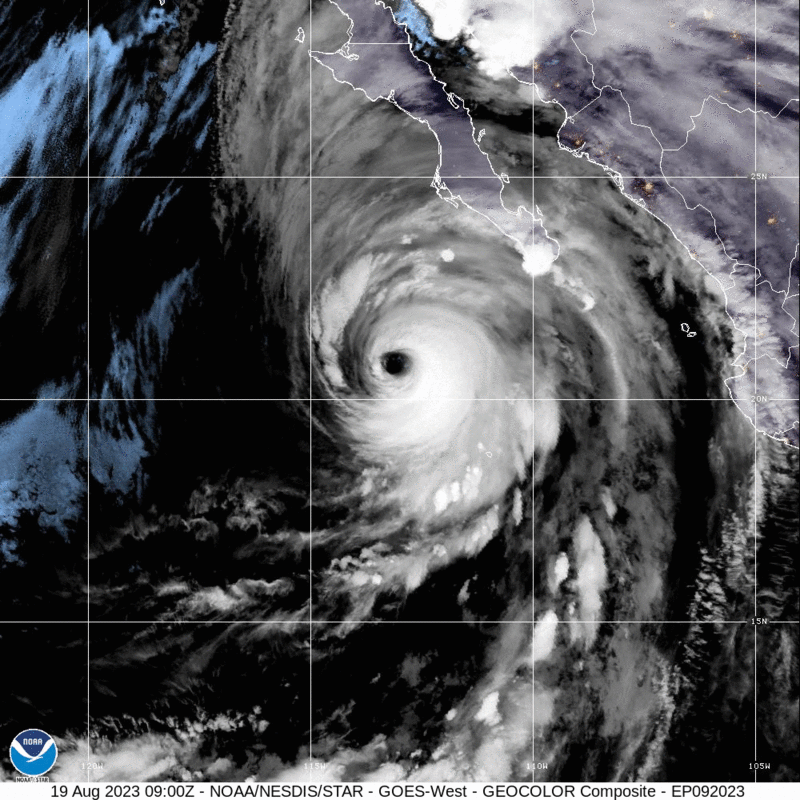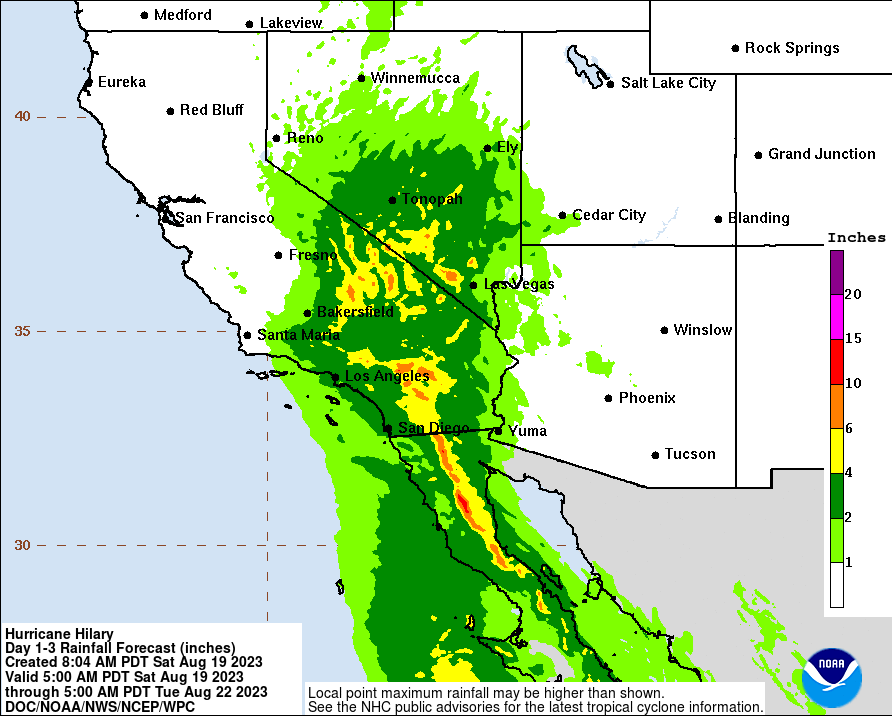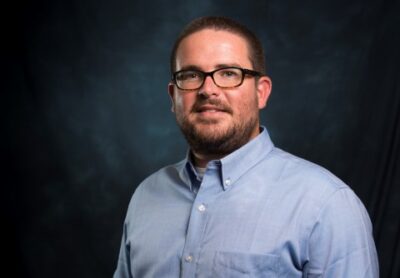
Hurricane Hilary Barrels Toward Baja California

Hurricane Hilary at 22.3°N – 113.5°W. Last observation: 19 Aug 2023 – 15:20 UTC. North Pacific Ocean. Image by NOAA.
Hurricane Hilary, a category 4 storm in the Pacific Ocean, approached the Baja California peninsula on August 18, 2023.
The Visible Infrared Imaging Radiometer Suite (VIIRS) on the NOAA-20 satellite acquired this image of Hilary in the predawn hours of August 18 (09:25 Universal Time), when the eye of the storm was about 400 miles (640 kilometers) off the coast of the peninsula. The image shows infrared brightness temperature data, which is useful for distinguishing cooler cloud structures (white and blue) from warmer surfaces below (yellow). The coolest temperatures are generally associated with the tallest clouds.
As of 9 a.m. Mountain Time (15:00 Universal Time) on August 18, Hilary had maximum sustained winds near 145 miles (230 kilometers) per hour, according to the National Hurricane Center, making it a category 4 hurricane on the Saffir-Simpson wind scale. Hilary formed as a tropical storm off the coast of Manzanillo, Mexico, on August 16. Between August 17 and August 18, Hilary intensified quickly from a tropical storm to a forceful category 4 hurricane.
The National Hurricane Center expects Hilary to continue moving north-northwest and weaken before reaching the center of the peninsula by the evening of August 19. Then, by the evening of August 20, the storm is forecast to move inland over Southern California and drench cities such as San Diego and Los Angeles with heavy rain. Scientists at NASA’s Short-term Prediction Research and Transition Center (SPoRT) expected that the heavy rain could saturate soils in the region for several days after the storm.
The Government of Mexico issued a hurricane warning for the Baja California peninsula from Punta Abreojos to Punta Eugenia. The U.S. National Hurricane Center issued a tropical storm watch for portions of Southern California, including San Diego and north up to Huntington Beach. This is the first time the center has issued a watch for that region.

Image courtesy of NASA.

Image courtesy of NOAA.
Related story, courtesy of California State University, Fullerton, via Newswise:
Experts anticipate that more than a year’s worth of rain could fall within a couple of days in some areas of Southern California this weekend. The National Hurricane Center on Friday issued the first-ever Tropical Storm Watch for Southern California. The region hasn’t experienced a tropical storm since 1939.
Joe Carlin, associate professor of geological sciences, notes that it is important to think of Hurricane Hilary as an isolated random event or possibly the start of a new trend. However, researchers won’t know the answer to that for many years.
What researchers do know is that these types of storms can create significant changes along the coast, which can be problematic for areas that have coastal development.

Joe Carlin « CSUF Marine Geologist: Tropical Storms Like Hurricane Hilary Could Significantly Change Southern California’s Coast
Carlin said: “In the case of Hilary, this could cause large waves that will move sand around — erode sand from one area and deposit sand somewhere else — erode cliffs and damage coastal structures. These storms may also cause a storm surge, which is flooding from the ocean that can inundate coastal areas inland from the beaches.
“The storm could bring heavy rains to the area which, in addition to flooding inland areas, could transport significant amounts of sand to the coast where it will be deposited, changing the coastline.
“In terms of episodic events, these create abrupt and significant changes to coastal areas and coastal processes. The stronger the event, like a tropical storm or hurricane, the faster and greater coastal change occurs.
“We cannot say that the storm Hilary on its own is related to climate change as this is a singular weather event and climate is the long-term average of weather. However, if we were to see multiple tropical storms or hurricanes over the next several years and decades, that may be related to climate change.”
About Cal State Fullerton: The largest university in the CSU and the only campus in Orange County, Cal State Fullerton offers 110 degree programs and Division 1 athletics. Recognized as a national model for supporting student success, CSUF excels with innovative, high-impact educational practices, including faculty-student collaborative research, study abroad and competitive internships. Our vibrant and diverse campus is a primary driver of workforce and economic development in the region. CSUF is a top public university known for its success in supporting first-generation and underrepresented students, and preparing all students to become leaders in the global marketplace. Our It Takes a Titan campaign, a five-year $250 million comprehensive fundraising initiative, prioritizes investments in academic innovation, student empowerment, campus transformation and community enrichment. Visit fullerton.edu.
I don’t like paywalls. You don’t like paywalls. Who likes paywalls? Here at CleanTechnica, we implemented a limited paywall for a while, but it always felt wrong — and it was always tough to decide what we should put behind there. In theory, your most exclusive and best content goes behind a paywall. But then fewer people read it! We just don’t like paywalls, and so we’ve decided to ditch ours. Unfortunately, the media business is still a tough, cut-throat business with tiny margins. It’s a never-ending Olympic challenge to stay above water or even perhaps — gasp — grow. So …




